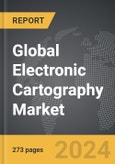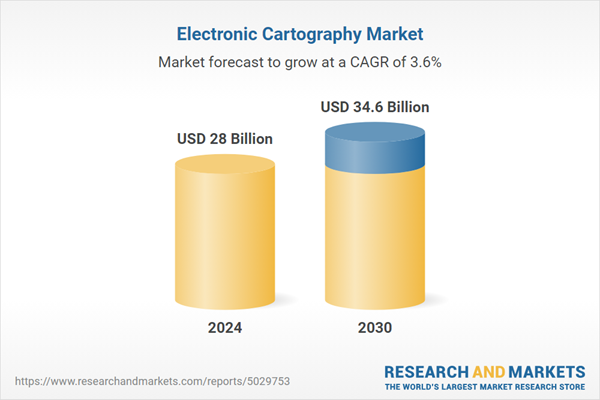Global Electronic Cartography Market - Key Trends and Drivers Summarized
How Is Electronic Cartography Modernizing Navigation and Geographic Analysis?
Electronic cartography represents a significant leap forward in the fields of navigation and geographic analysis, employing digital means to create, display, and manage cartographic information. This technology uses electronic systems to compile maps and navigational charts that are more accurate, flexible, and accessible than traditional paper counterparts. In sectors such as maritime, aviation, and land transportation, electronic cartography systems (ECS) provide real-time data that can be crucial for safe routing and situational awareness. These systems integrate GPS and other sensor inputs to offer up-to-date information on a variety of environmental and situational factors, such as weather conditions, traffic density, and geographical hazards. The versatility and dynamic nature of electronic maps enable users to zoom, pan, and switch between different map layers and data sets, enhancing decision-making processes and operational efficiency.What Innovations Are Enhancing the Functionality of Electronic Cartography?
Innovation in electronic cartography is centered around improving the accuracy, usability, and integration of cartographic data. One significant advancement is the development of Automatic Identification Systems (AIS) that enhance maritime safety by integrating real-time ship data into electronic navigational charts. There's also a growing emphasis on integrating Geographic Information Systems (GIS) with electronic cartography to analyze spatial and geographical data more comprehensively. GIS applications in urban planning, disaster management, and environmental monitoring utilize the dynamic capabilities of electronic maps to provide deeper insights and predictive analysis. Additionally, the application of machine learning and artificial intelligence in electronic cartography is improving the automation of map updates and the accuracy of navigational aids, which is particularly crucial for autonomous vehicle technologies. Cloud computing is further expanding the accessibility and collaborative potential of maps, allowing for real-time updates and sharing of geographic information across platforms.How Do Electronic Cartography Systems Impact Environmental Sustainability?
Electronic cartography systems contribute to environmental sustainability by enhancing the efficiency and safety of navigation, which can lead to reduced fuel consumption and lower emissions. In maritime and aviation industries, for example, optimized routing enabled by precise electronic maps can significantly decrease the distance traveled and time spent, thereby saving fuel and reducing carbon footprints. Additionally, electronic cartography is vital for environmental monitoring and management, providing essential data for tracking ecological changes, monitoring deforestation rates, or managing water resources. By facilitating more informed decision-making, electronic maps help in planning and implementing conservation projects, disaster response, and sustainable land use practices more effectively.What Trends Are Driving Growth in the Electronic Cartography Market?
The growth of the electronic cartography market is driven by several trends, including the increasing reliance on spatial data across various sectors, the expansion of mobile and cloud-based solutions, and heightened regulatory standards for safety and efficiency in navigation. The surge in location-based services, urban planning, and smart city projects has intensified the demand for up-to-date and accessible electronic maps. The integration of electronic cartography with mobile devices and online services is making geographical information more readily available to a broader audience, including the general public and professionals alike. In the regulatory realm, international maritime and aviation organizations are mandating the use of electronic navigation systems to enhance safety at sea and in the air, further propelling the adoption of advanced cartographic solutions. These trends, combined with continual technological advancements, are set to expand the scope and depth of electronic cartography, making it an indispensable tool in the modern digital landscape.Report Scope
The report analyzes the Electronic Cartography market, presented in terms of market value (USD). The analysis covers the key segments and geographic regions outlined below.- Segments: Application (Aviation, Marine).
- Geographic Regions/Countries: World; United States; Canada; Japan; China; Europe (France; Germany; Italy; United Kingdom; and Rest of Europe); Asia-Pacific; Rest of World.
Key Insights:
- Market Growth: Understand the significant growth trajectory of the Aviation Application segment, which is expected to reach US$26.5 Billion by 2030 with a CAGR of 3.8%. The Marine Application segment is also set to grow at 3.1% CAGR over the analysis period.
- Regional Analysis: Gain insights into the U.S. market, valued at $7.6 Billion in 2024, and China, forecasted to grow at an impressive 3.5% CAGR to reach $5.5 Billion by 2030. Discover growth trends in other key regions, including Japan, Canada, Germany, and the Asia-Pacific.
Why You Should Buy This Report:
- Detailed Market Analysis: Access a thorough analysis of the Global Electronic Cartography Market, covering all major geographic regions and market segments.
- Competitive Insights: Get an overview of the competitive landscape, including the market presence of major players across different geographies.
- Future Trends and Drivers: Understand the key trends and drivers shaping the future of the Global Electronic Cartography Market.
- Actionable Insights: Benefit from actionable insights that can help you identify new revenue opportunities and make strategic business decisions.
Key Questions Answered:
- How is the Global Electronic Cartography Market expected to evolve by 2030?
- What are the main drivers and restraints affecting the market?
- Which market segments will grow the most over the forecast period?
- How will market shares for different regions and segments change by 2030?
- Who are the leading players in the market, and what are their prospects?
Report Features:
- Comprehensive Market Data: Independent analysis of annual sales and market forecasts in US$ Million from 2024 to 2030.
- In-Depth Regional Analysis: Detailed insights into key markets, including the U.S., China, Japan, Canada, Europe, Asia-Pacific, Latin America, Middle East, and Africa.
- Company Profiles: Coverage of players such as Garmin Ltd., Honeywell International, Inc., Iic Technologies Ltd., Jeppesen Sanderson, Inc., Navionics srl and more.
- Complimentary Updates: Receive free report updates for one year to keep you informed of the latest market developments.
Some of the 42 companies featured in this Electronic Cartography market report include:
- Garmin Ltd.
- Honeywell International, Inc.
- Iic Technologies Ltd.
- Jeppesen Sanderson, Inc.
- Navionics srl
- Northrop Grumman Corporation
- Rockwell Collins, Inc.
- Thales Group
- Transas Marine
- Universal Avionics System Corporation
This edition integrates the latest global trade and economic shifts into comprehensive market analysis. Key updates include:
- Tariff and Trade Impact: Insights into global tariff negotiations across 180+ countries, with analysis of supply chain turbulence, sourcing disruptions, and geographic realignment. Special focus on 2025 as a pivotal year for trade tensions, including updated perspectives on the Trump-era tariffs.
- Adjusted Forecasts and Analytics: Revised global and regional market forecasts through 2030, incorporating tariff effects, economic uncertainty, and structural changes in globalization. Includes historical analysis from 2015 to 2023.
- Strategic Market Dynamics: Evaluation of revised market prospects, regional outlooks, and key economic indicators such as population and urbanization trends.
- Innovation & Technology Trends: Latest developments in product and process innovation, emerging technologies, and key industry drivers shaping the competitive landscape.
- Competitive Intelligence: Updated global market share estimates for 2025, competitive positioning of major players (Strong/Active/Niche/Trivial), and refined focus on leading global brands and core players.
- Expert Insight & Commentary: Strategic analysis from economists, trade experts, and domain specialists to contextualize market shifts and identify emerging opportunities.
Table of Contents
Companies Mentioned (Partial List)
A selection of companies mentioned in this report includes, but is not limited to:
- Garmin Ltd.
- Honeywell International, Inc.
- Iic Technologies Ltd.
- Jeppesen Sanderson, Inc.
- Navionics srl
- Northrop Grumman Corporation
- Rockwell Collins, Inc.
- Thales Group
- Transas Marine
- Universal Avionics System Corporation
Table Information
| Report Attribute | Details |
|---|---|
| No. of Pages | 273 |
| Published | December 2025 |
| Forecast Period | 2024 - 2030 |
| Estimated Market Value ( USD | $ 28 Billion |
| Forecasted Market Value ( USD | $ 34.6 Billion |
| Compound Annual Growth Rate | 3.6% |
| Regions Covered | Global |









